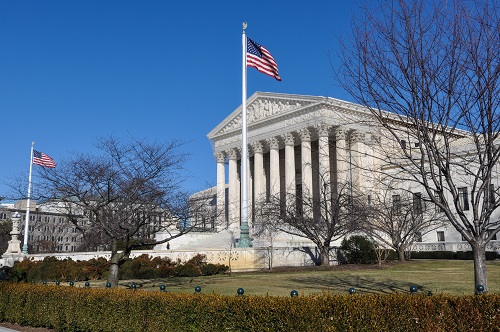Stocks and bonds under pressure as markets price in larger US rate rises
Stocks dropped, government bonds sold off and the dollar ripped higher on Thursday, as red-hot inflation in the world’s largest economy fuelled expectations of larger US interest rate rises.
Futures contracts tracking Wall Street’s S&P 500 fell 1.2 per cent, after the broad index closed 0.5 per cent lower on Wednesday. Contracts tracking the technology-heavy Nasdaq 100 slumped 0.8 per cent. Europe’s Stoxx 600 share gauge dropped 1.2 per cent, taking its year-to-date losses to more than 16 per cent.
US consumer prices increased by their most in 40 years last month, a report from the Bureau of Labor Statistics showed on Wednesday, with the annual rate of inflation topping economists’ forecasts to hit 9.1 per cent.
Those data fuelled expectations of a much larger interest rate rise from the US Federal Reserve when it meets at the end of July. Futures markets are now pricing the possibility of a 1 percentage point increase by the Fed, after it raised borrowing costs by 0.75 percentage points in June — the most since 1994.
Salman Ahmed, global head of macro and strategic allocation at Fidelity International, said a 0.75 percentage point rise “looks very likely” but added that the market was continuing to price a peak interest rate of 3.5 per cent, with the Fed simply “front-loading hikes”.
“This is not just about inflation,” Ahmed said. “There’s a significant slowdown in the pipeline. We think this growth slowdown will turn into a recession.”
The Fed’s current target range for its benchmark policy rate stands at 1.50-1.75 per cent.
Earnings reports on Thursday added to the sense of gloom. Jamie Dimon, chief executive of JPMorgan, warning against threats to global economic growth from “never-before-seen” tightening from central banks, inflation, weak consumer confidence and geopolitical challenges, as the bank missed profit expectations in the second quarter of 2022. Morgan Stanley also missed expectations on Thursday.
Georgina Taylor, a multi-asset fund manager at Invesco, noted that the market was “more sensitive” to earnings disappointments. “There’s potentially an asymmetric reaction to bad news at the moment: it might add fuel to the fire.”
The prospect of more aggressive monetary policy tightening by the Fed piled pressure on government bonds, with the yield on the 10-year US Treasury note rising 0.06 percentage points to 2.97 per cent. The two-year yield, which closely tracks interest rate expectations, added 0.08 percentage points to 3.23 per cent. Bond yields rise as their prices fall.
Those moves meant that the so-called Treasury yield curve remained at its most inverted in more than 20 years, a scenario that has historically preceded recession in the world’s largest economy.
Eurozone government debt also sold off, with the two-year German bond yield adding 0.11 percentage points to 0.56 per cent and Italy’s equivalent yield surging 0.3 percentage points to 1.54 per cent, after the Five Star Movement threatened to collapse Mario Draghi’s cross-party government.
Anticipation of higher US borrowing costs and the possibility of a global economic slowdown drove investors into the dollar, traditionally seen as a haven in times of stress. The dollar index, which measures the US currency against a basket of six others, rose 0.7 per cent.
That gain spelt further pain for the euro, which had on Wednesday briefly weakened to parity with the greenback for the first time in 20 years. The common currency slipped 0.6 per cent on Thursday to trade a fraction above $1.
The Japanese yen lost more than 1 per cent to hit a fresh 24-year low of ¥139.39 as traders bet that the Bank of Japan would stick to its ultra-loose monetary policy, marking an increasingly stark divergence from the strategies of other major central banks as they attempt to stamp down rapid price growth.








